
The best online fitness resource you'll ever need. We filter out the BS to ensure you meet your health and fitness goals!

The best online fitness resource you'll ever need. We filter out the BS to ensure you meet your health and fitness goals!
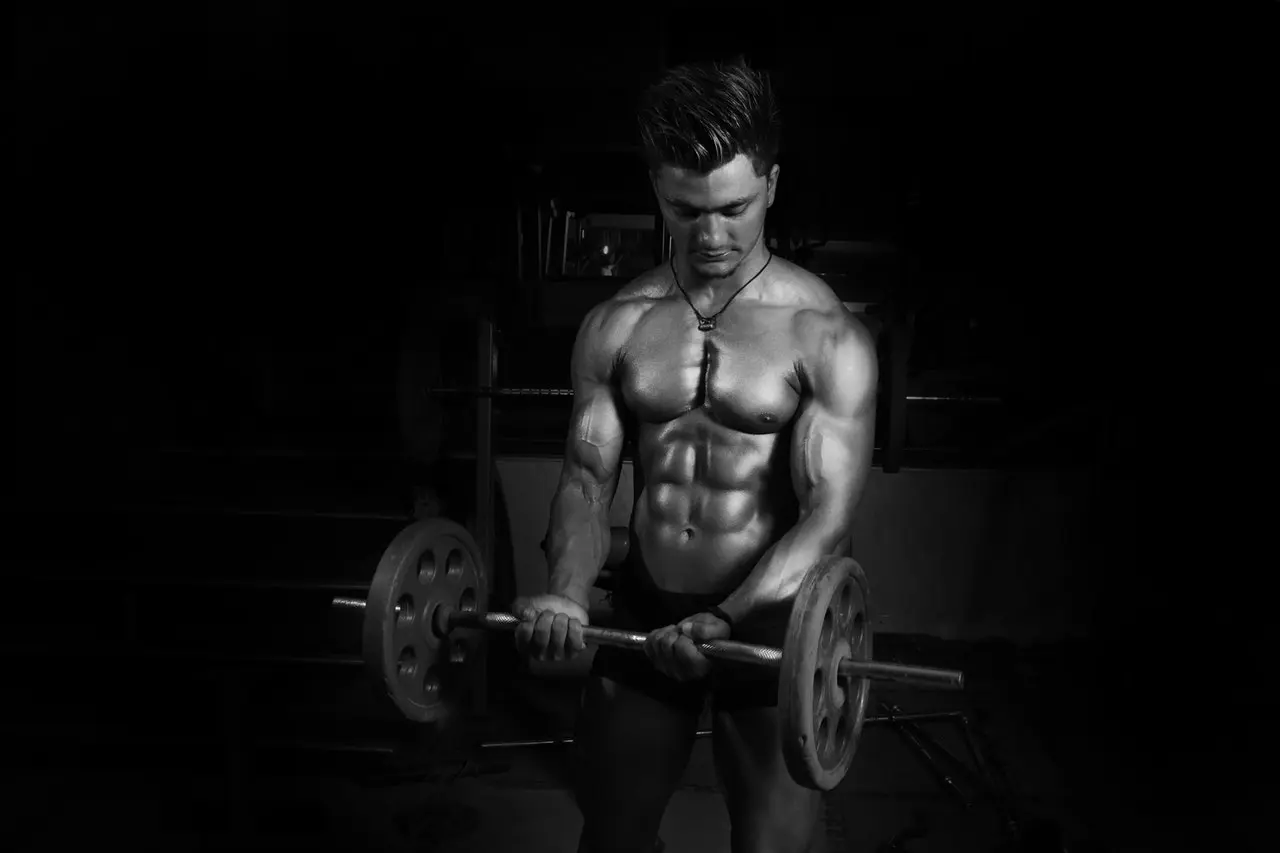
To many fitness enthusiasts and gym goers, washboard abs are the proof of the pudding: they show that you’re in shape, that you’re strong and athletic, that you put your money where your mouth is.
Most people won’t know the kind of abs they can achieve until they reveal them: whether you are predisposed towards a four pack, six pack, eight pack, or even a ten pack will be a matter of personal genetics.
However, four packs are really quite common. For instance, Arnold Schwarzenegger is arguably the most famous bodybuilder of all time. Even at his strongest and leanest, he never developed a six pack. He is genetically predisposed towards a four pack, so this is what he maintained.
Whatever way your abs are built, you can make the most of them by following a few simple rules.
For your four pack to show, you will need to align a couple of things. Firstly, you will need to have the four pack muscles defined and strong. Secondly, you will need to strip away your total body fat so that they become actually visible.
There is no single exercise or product that can enable you to lose fat from around your stomach. The amount of fat that you carry around your midriff will be broadly determined by two main things:
This two-step approach to carving out a four pack is vital. First, you need to sort out your nutrition so that you can get your bodyfat down to around 15% and below (for men) or 20% and below (for women). At the same time, you’re going to build up your core musculature to give yourself something to show off when your bodyfat is down to where you need it.
The rectus abdominus muscle is made of bands of fascia (connective tissues) that cross horizontally. These bands are what give you the grid pattern so common to four, six and eight packs.

The number of these bands you have is set: you are born with them and cannot create additional ones. You can only increase the size of the ones you already have, though genetics plays a role here, too, defining how large they are able to grow. Symmetry, length and breadth are all similarly reliant on genes.
So too is your fat burning potential, to a degree. Some people have naturally faster metabolisms than others, and these people will generally find it easier to maintain their four packs.
Generally, a person with four of these fascia will be able to build an eight pack. A person with three will be able to build a six pack, and a person with two, the four pack that we’re looking at today. Also, somebody with the capability to build a six or eight pack may maintain a four pack due to their fat distribution: if you carry a little fat around the lower portion of your torso, you may be covering up your lower abs, meaning that your upper, visible abs form a four pack.
In order to perfect your four pack, you will need to know the science behind the diet, exercises and lifestyle requirements behind abdominal training. You will also need to know a little on the difference between the muscles of the abdomen in order to make the most of the hard work you’re going to be putting into training them.
Your abdomen is made up of four groups of muscles. For a fully toned, strong looking four pack, you will need to train them all to a pretty decent degree.
These muscle groups are:
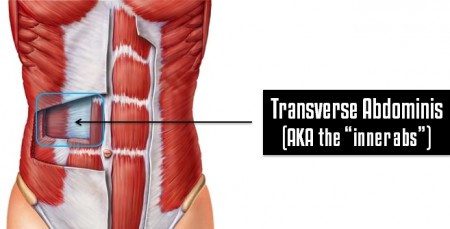
The transverse abdominus is your body’s corset: it is a very deep layer of muscle tissue that extends from the front of your abdomen around to the sides, keeping your foundation solid. It provides strength and stability to your core, back, and pelvis, and forms a protective sheath around your internal organs.
It will be very rare to find an exercise type, style or move that doesn’t rely on it in some way.
Without strengthening your transverse abdominus, the other muscle groups making up your core cannot become strong or developed. It is very much the foundation of your four pack.

This is the visible component of your four pack. It is made up of two connected muscle bands that run parallel to each other, each running down either side of your abdomen.
The linea alba is a fibrous band that separates the rectus abdominis. It forms the line that runs down the middle of the abdomen and will form the central separation of your four pack. The incriptiones tendinae then further subdivide each rectus abdominis muscle into a series of smaller false muscle bellies. These will create the four individual sections of your four pack.
The rectus abdominis works to move your core, regulate your breathing, maintain your posture and keep your internal organs protected (though in a less fundamental way to your transverse abdominus).
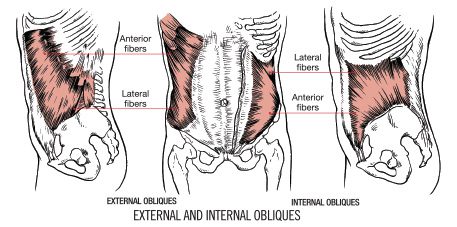
Your internal and external obliques form the side-to-rear portions of your core muscles and work to regulate the twisting and turning movements of your body. They work alongside your transverse abdominus to provide a stabilizing corset structure for your back and pelvis.
Your external obliques are large, meaning that they can handle a lot of weight and need to be worked hard. They can be found at the sides of the rectus abdominis.
Your internal obliques are located just underneath the external portion, inside your hip joints. Working your internal obliques adds strength and a stable base to your abs, whilst working your external obliques brings the definition and tone to your midsection that is characteristic of the four pack.
All four structures need to be worked hard on a regular basis. This will grow them enough that, once your bodyfat is low enough, your four pack will build and emerge.
Though bodyfat (and thus diet) will be the main aspect determining how ripped your midsection looks, there are ways to supplement this with exercise.
There are various forms of exercise and training protocols that will help you to build up and reveal your four pack abs, and we’ll run through them below.

Cardiovascular exercise has been linked to an ability to reduce belly fat. Though spot reduction fat loss is impossible- meaning that you cannot target your midsection specifically for fat loss- an overall drop in bodyfat will lead to your waistline shrinking and your abs becoming visible.
Cardio has been shown to help with this. Typical cardiovascular exercises include:
It’s important to note that performing cardio is a very inefficient way to lose weight, as mentioned above. A caloric deficit is the most viable way to bring your body fat down. However, combining a caloric deficit with cardio can bring about wonderful results.
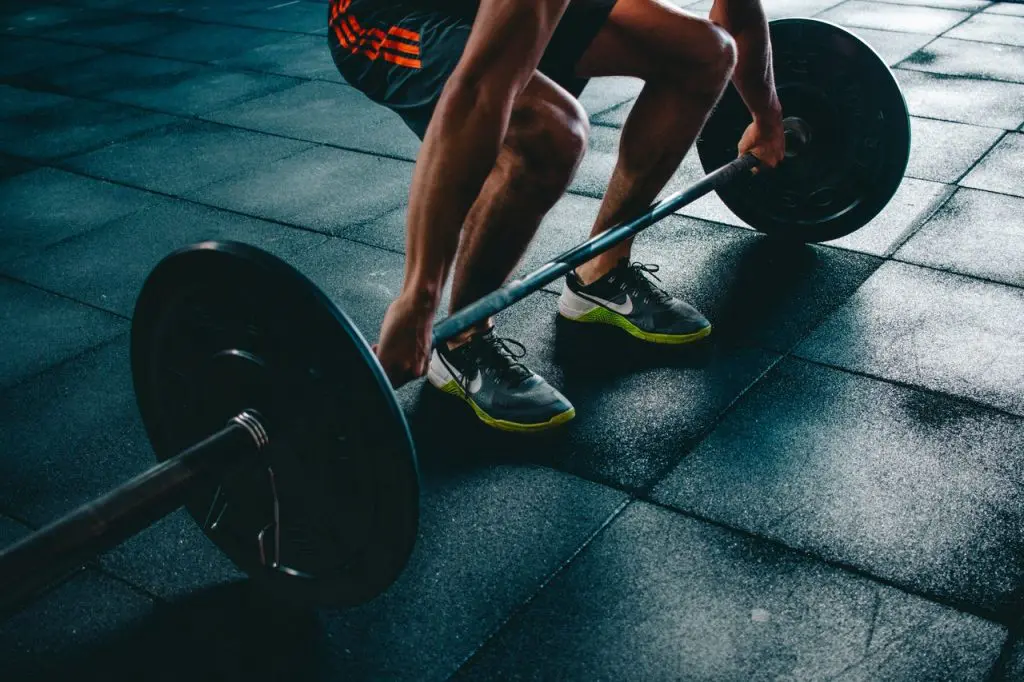
This is where most of the four pack ab training will be performed: resistance training. Working your muscles against some form of resistance- body weight, gravity, dumbbells and so on- is the best way to build them and keep them growing.
One of the best ways to build up core strength and stability is the incorporation of large, compound movements into your routine. These can include:
Each will use your deep core muscles for stability, and the act of generating and maintaining force through your midsection- a big deal in compound lifting- will be perfect for using core muscles as they are meant to be used.
Finish each workout off with some direct ab work. Whilst sit-ups and crunches have been rubbished by many in the scientific community, there is a whole host of different movements that can light up your core, as we have outlined here.
High-intensity interval training (HIIT) is one of the greatest ways to burn fat and build strength at the same time.
You will use large muscle groups to perform challenging exercises like cycle sprints, burpees, Olympic lifts etc., for set time periods. Following this, you will rest for a brief period before repeating. A typical example could be 30 seconds of work (say alternating kettlebell cleans with squat jumps), followed by 30 seconds of rest, repeated 8 times.
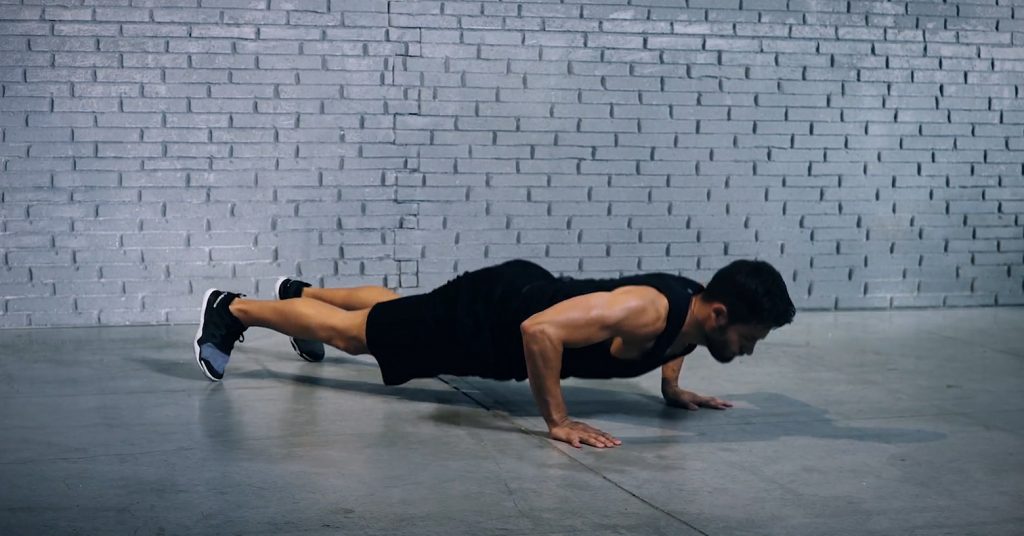
Not only will this help you to burn precious calories, but the compound nature of the exercises used in HIIT will help to directly build you core strength, adding muscle mass to your four pack.
There is always a fear when you put yourself through a caloric deficit that your muscles will atrophy. Starved of its usual flow of energy, your body begins to break down muscle. Resistance training should slow this down- if you’re new to training, you will likely even be putting on a lot of muscle whilst losing body fat.
Then, when all that body fat comes off and you are down to your target weight, you will something to show for it: as the fat is stripped away, a nicely developed, strong four pack will be waiting for you.
This is what four packs are made of: caloric deficits to bring your fat down, combined with good quality core work to bring your muscle tone up. This is how you will get that toned looking midriff that you are after.
We need to hammer this home even more than we have already been doing: diet is the most important part of the process when you are growing your four pack.
It is vital: it will make your four pack if done correctly, or it will doom it to failure if not.
To lose weight and bring yourself down to the recommended bodyfat percentage for a four pack to be visible (15% for men, 20% for women, or thereabouts, as mentioned above) you will need to maintain a caloric deficit. You will need to eat less than you burn, in essence. Aim for a loss of around 0.5kg/1lb per week over a sustained period. This will allow you to lose the weight you want whilst maintaining muscle mass. A deeper cut than this will likely lead to atrophy (muscle wastage) meaning that you won’t have a four pack to show off when you get down to the right weight.
To lose this amount, simply deduct 500 calories per day from your maintenance caloric intake. If you currently eat 2,500 calories per day and are neither losing nor putting on weight, you will therefore want to eat 2,000.
Of course, exercise is useful in creating a caloric deficit. Cardiovascular work- both high intensity, explosive training and slower, steady state training- can help you in burning calories. However, it’s not very efficient: it would take approximately half an hour for an average person to jog off an average chocolate bar- far easier simply to forego the chocolate bar!
I would suggest burning off around 200 calories per day doing extra cardio and eating to a 300 calorie deficit as a nice mid-point between the two.
You will also want to keep your protein levels high. If you want strong, solid abs that show through when you’ve finally shifted all that weight, you need to build muscle around your core. This can only be done with sufficient protein intake. So, keep your protein high, fats moderate, and take your calorie deficit from carbs.
You need to eat plenty of protein to build muscle. This can be anything from 1-2g per kilogram of bodyweight, with some athletes going even higher than.

Protein give you the building blocks of muscle, enabling you to grow a strong, solid core for your four pack. It also sates your hunger for longer than carbs, meaning that you will be able to maintain the required caloric deficit more easily if you form your diet from more protein.
Leaner protein sources are best, and can include:
Hopefully, you now know everything you need to be able to build a good quality, strong and visible four pack. The muscular components of your midsection should no longer be a mystery, and you should have a good grasp on what each muscle is meant to do and how it is meant to look.
You should know how to structure your diet and training to maximise your core muscles’ ability and visibility, and you should know exactly what you need to do long-term to maintain that perfect midsection.
With these tools, getting a four pack should be a simple (if not always easy) process.